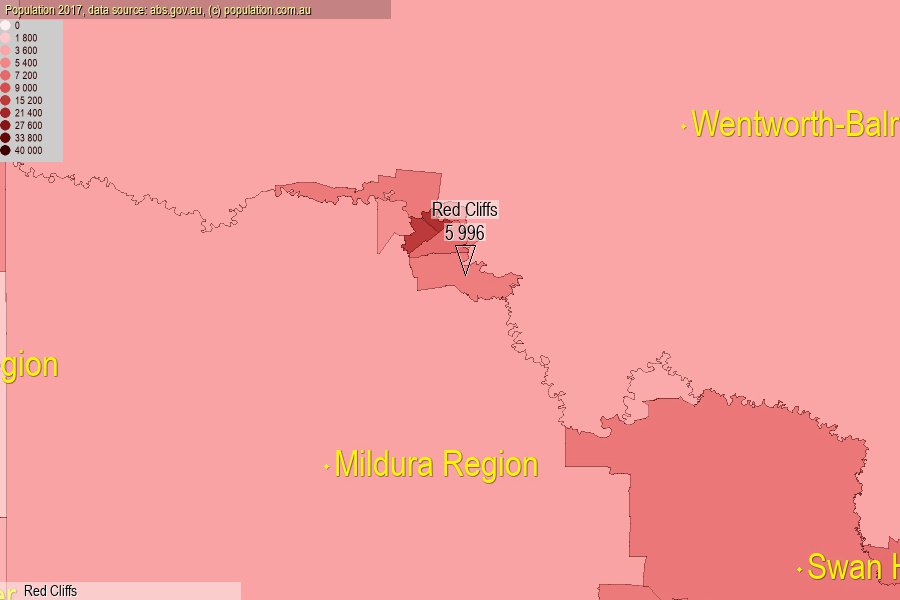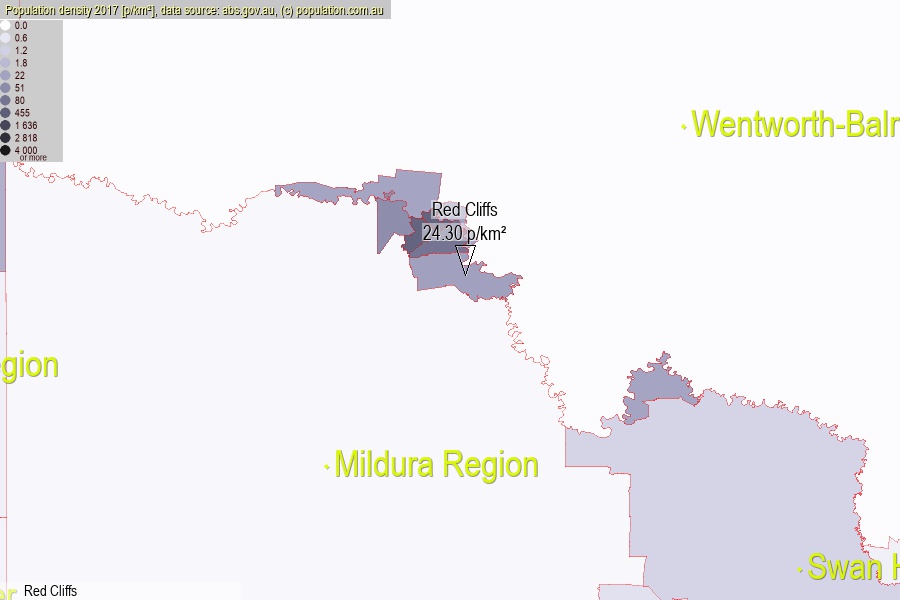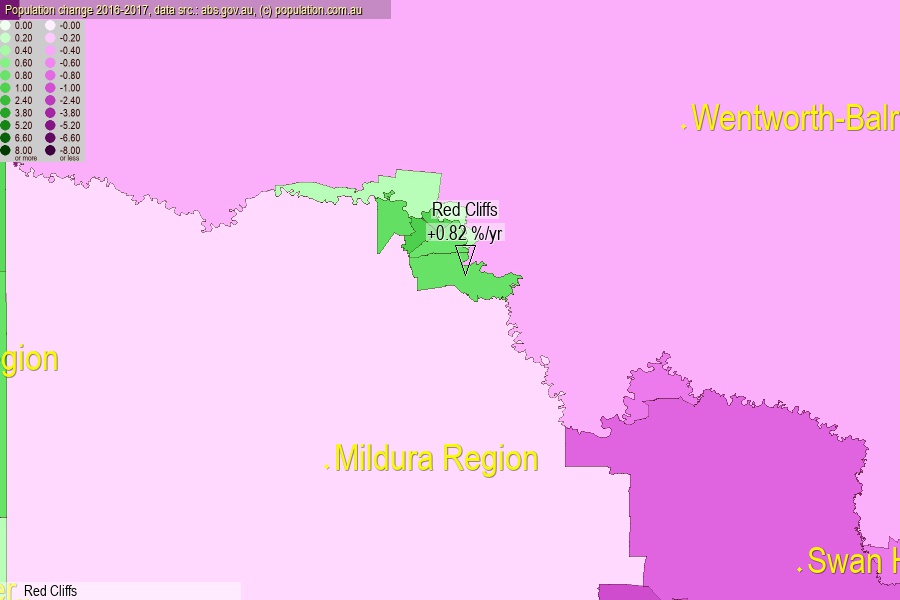 population.com.au
population.com.auLast official estimated population of Red Cliffs (as Statistical Area Level 2) was 5 996 people (on 2017-06-30)[2]. This was 0.02% of total Australian population and 0.093% of VIC population. Area of Red Cliffs is 246.70 km², in this year population density was 24.30 p/km² . If population growth rate would be same as in period 2016-2017 (+0.82%/yr), Red Cliffs population in 2025 would be 6 403. [0]



Click to enlarge. Red Cliffs is located in the center of the images.
Population [people], population density [p./km²] and population change [%/year] [2]
View borders » (new window) [4]
[1991-1992] +0.20 %/Yr.
[1992-1993] -0.30 %/Yr.
[1993-1994] -0.34 %/Yr.
[1994-1995] +0.05 %/Yr.
[1995-1996] +0.13 %/Yr.
[1996-1997] +0.92 %/Yr.
[1997-1998] +1.34 %/Yr.
[1998-1999] +1.41 %/Yr.
[1999-2000] +0.92 %/Yr.
[2000-2001] +1.19 %/Yr.
[2001-2002] -0.19 %/Yr.
[2002-2003] -1.65 %/Yr.
[2003-2004] -1.37 %/Yr.
[2004-2005] -0.63 %/Yr.
[2005-2006] -1.13 %/Yr.
[2006-2007] -0.91 %/Yr.
[2007-2008] -0.70 %/Yr.
[2008-2009] -0.22 %/Yr.
[2009-2010] -0.35 %/Yr.
[2010-2011] -0.40 %/Yr.
[2011-2012] +1.98 %/Yr.
[2012-2013] +1.74 %/Yr.
[2013-2014] +2.10 %/Yr.
[2014-2015] +1.28 %/Yr.
[2015-2016] +1.57 %/Yr.
[2016-2017] +0.82 %/Yr.
[0] Calculated with linear interpolation from officially estimated population
[1] Read more about SA2 and Australian Statistical Geography Standard (ASGS) on abs.gov.au
[2] Population data from Australian Bureau of Statistics (Population and density: 2017; change: 2016-2017)
[3] Digital Boundaries: Australian Statistical Geography Standard (ASGS) 2016.
[4] Border coordinates are simplifyed using Ramer-Douglas-Peucker algorithm.